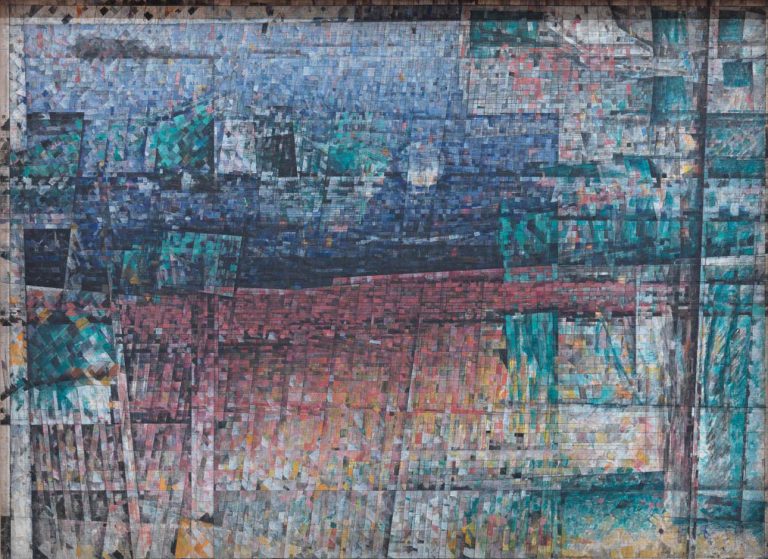We acknowledge the Traditional Owners of the land on which the Queensland Art Gallery | Gallery of Modern Art stands and recognise the creative contribution First Australians make to the art and culture of this country.

Godfrey Miller / Australia 1893–1964 / Trees in moonlight 1955–57 / Oil, pen and ink on canvas on wood / 62.5 x 85.7cm / Gift of the Godfrey Rivers Trust through Miss Daphne Mayo 1960 / Collection: Queensland Art Gallery | Gallery of Modern Art / © QAGOMA
Godfrey MillerTrees in moonlight 1955–1957
Not Currently on Display
In Trees in moonlight 1955–57, Godfrey Miller tries to capture the subtly moving moon. The remarkable spatial structure of the painting became the unique feature of his art. The structure is governed by two grids — an underlying geometric division of the canvas and a lattice of black ink lines that traverse the surface and define the ground, the trees and the sky.1
Trees in moonlight 1955–57 was painted at the Domain, Sydney, a favourite haunt of Miller’s (to his great distress, the trees were cut down shortly afterwards to make way for a carpark).
Miller was known for working on paintings for multiple years and for working in series, both of which are true of this work. Other works in this series include Trees in quarry 1952–56 and Blue unity 1954–57.
Endnotes:
1. Deborah Edwards, ‘Art and Mysticism’, in Brought to Light: Australian Art 1850–1965, Queensland Art Gallery, Brisbane, 1998, p.248.
Godfrey Miller was born in Wellington, New Zealand, in 1893. He enlisted in the New Zealand Expeditionary Force in 1914, serving in Gallipoli as a signalman, and was later discharged following a severe wound to his right arm.
He lived and worked in London from 1929 to 1939. On returning to Australia, he led a modest lifestyle as a solitary painter, later teaching part-time at East Sydney Technical College. Some of Miller’s greatest works were created during his time in Sydney when his interest in mathematics, French Modernism and the teachings of Austrian philosopher Rudolf Steiner coincided.
Through his paintings, Miller expressed his philosophy about everything he observed, thought and reasoned about the visible world, whether the subject was still-life, nude figures, or trees. He reduced everything to separate components which he then reassembled.
Discussion Questions
It has been said that Miller’s paintings are an ‘expression of the belief that the cellular secrets of the universe are contained in a drop of water’ (Susan McCulloch in Encyclopaedia of Australian Art, Allen and Unwin, Sydney, 1994, p. 486.) What approaches, in style and technique, has Miller used in Trees in moonlight that supports this?
Classroom Activities
Take a series of photographs, both close up and distant, of the natural and man-made environment. Combine two of your photographs into a new work by slicing, layering, weaving and pasting.